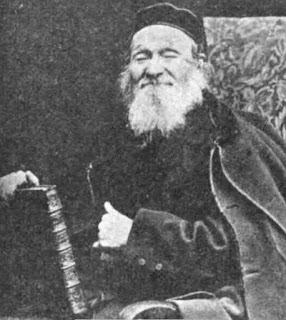Elijah Zvi Soloveitchik (also known as Elias Soloweyczyk) was likely born in Slutzk, Russia, in 1805 and died in London in 1881. He was the grandson of Hayyim ben Isaac of Volozhin (1749–1821), the founder of the Volozhin Yeshiva in the Polish-Lithuanian Commonwealth. An early member of the Soloveitchik rabbinic dynasty, his lineage extends to the present, with a descendant currently serving as the president of Yale University.
Educated at the Volozhin Yeshiva, the most prestigious Jewish institute of higher learning in the nineteenth century, Soloveitchik was deeply immersed in classical Judaism. Comparisons between him and Jacob Emden (1697–1776) are reasonable, as both acknowledged the morality of Christianity and rejected the notion that Jesus came to abolish the law for Jews. However, the resemblance is superficial. Unlike Soloveitchik, Emden, though well-versed in the Gospels (which he frequently cited), never wrote extensively about them, nor did he go as far as Soloveitchik in arguing that Judaism and Jesus’ faith—better termed the Christian faith—were fundamentally indistinguishable.
Soloveitchik’s writings reveal a passionate, candid, and sincere thinker grappling with what he believed was a millennia-old misunderstanding between Judaism and Christianity. His work provides a rare glimpse into the mind of an Eastern European Jew confronting modernity, challenging long-standing Jewish assumptions about the supposed irreconcilability of the two faiths. He grants Christianity its historical and theological legitimacy, offering a perspective on Jesus of Nazareth untainted by the accretions of folk distortions and the controversies embedded in Talmudic polemics.
However, where Soloveitchik takes a Maimonidean turn, I must diverge. His attempt to reconcile Maimonides (Rambam) with the Litvak Perushim was met with criticism, particularly from within Lithuanian Jewry, though some Hasidic groups—most notably Chabad—embraced aspects of this approach. Menachem Mendel Schneerson, the Lubavitcher Rebbe, encouraged such studies within the remnants of Yiddish Judaism, seeking to revive a rigorous intellectual engagement with Maimonides’ thought.
Yet, Maimonides’ rationalist framework stands in stark contrast to the deeply mystical tradition of Kabbalah, which he explicitly rejected. His Guide for the Perplexed aligns more closely with classical theism, mirroring the Aristotelian logic later systematized in Thomas Aquinas’ Summa Theologica for the Catholic Church. Just as Aquinas sought to create a symmetrical system based on Aristotle, Maimonides did the same within Judaism—an effort that, while intellectually formidable, ultimately distances itself from the organic, revelatory nature of biblical and rabbinic tradition. His metaphysical approach, akin to the analogia entis developed through Meister Eckhart, finds resonance in Western Scholasticism but remains incompatible with the inner workings of post-Second Temple Judaism.
This is where Soloveitchik, despite his rationalist leanings, inadvertently brings us back to a crucial safe haven: the New Testament text itself. While his commentary may at times feel earthy and unfamiliar, it opens a door to honest engagement with the words and mission of Jesus of Nazareth, free from centuries of polemical baggage.
The history of the twentieth century was not kind to Soloveitchik’s predictions. As a result, he and his work faded into obscurity—until now. His writings deserve renewed examination, not necessarily as a blueprint for merging Judaism and Christianity, but as a bold attempt to bend history toward coexistence and mutual understanding. He sought to dismantle the animosity and lingering hatred that have long divided the two faiths, yet ultimately, true reconciliation can only be found in the one name under which salvation is given: Jesus the Christ.

